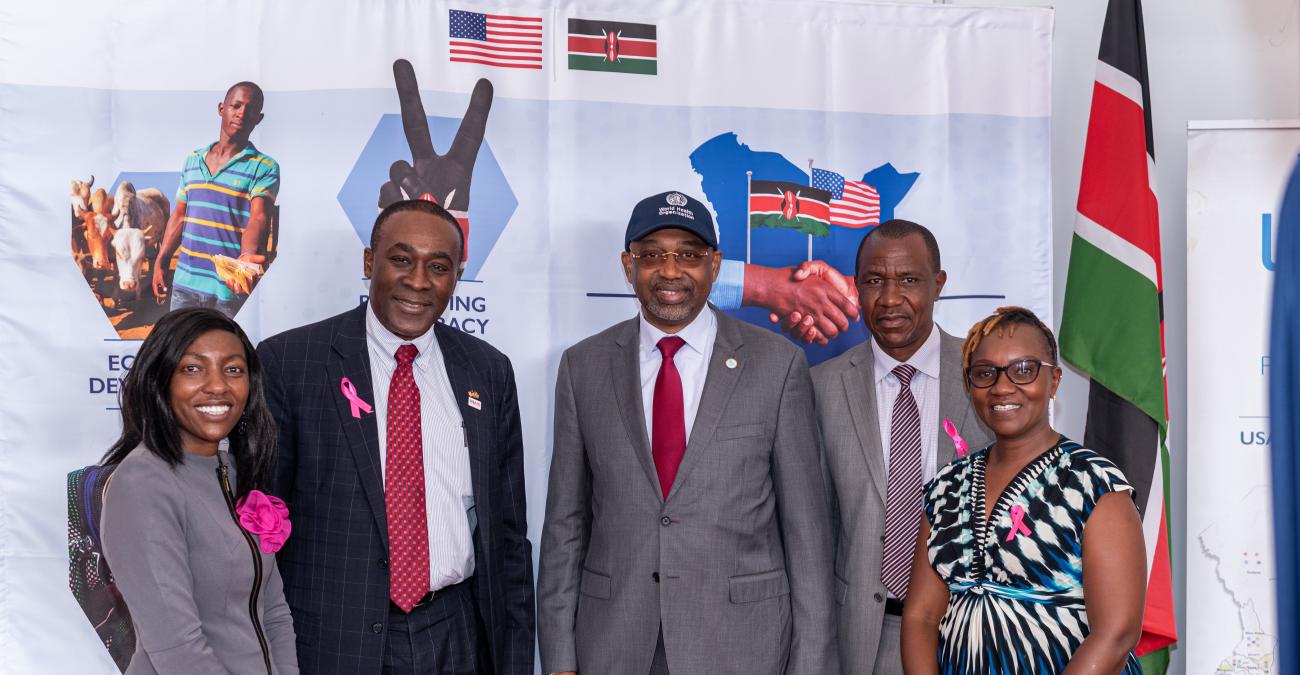The Government of Kenya is addressing its health workforce challenges with data, evidence, and dialogue to inform a long-term strategic approach and appropriate levels of investment needed to strengthen the health workforce.
Health workers from nurses to midwives, doctors, clinical officers and health professionals play a pivotal role in improving people’s health and well-being. Strengthening the health workforce is a key pillar in the Government’s plan to achieve UHC.
Kenya’s health workforce will better meet the population’s health needs because education, training, and employment strategies and approaches will ensure that appropriate levels of health workers serve communities nationwide.
The Government of Kenya, with support from WHO, used data, evidence, and strategic dialogues to facilitate investments aimed at strengthening health service delivery, guided by the Kenya Human Resources for Health Strategy 2019-2023.
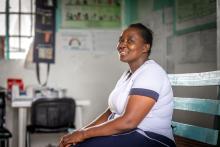
“Five years ago, I used to be 1 of 2 nurses working at this facility. I remember when some clients would come, and I used to turn them down because I was too tired. These days, we are a team of 4 so I am able to respond to my patients efficiently. Even when one of us goes on leave, we still have capacity.”
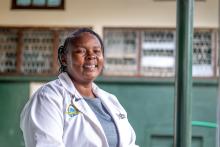
“In the past we used to have difficulties in managing our clients. For example, if we had an emergency case, we would not be able to leave that emergency to attend to the other patients which really increased their waiting time.”
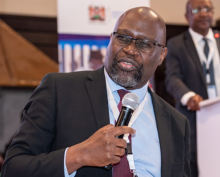
“To effectively use the investments made in the health sector as part of the UHC journey, there is need for a fit-for-purpose health workforce with appropriate skills mix and adequate number.”
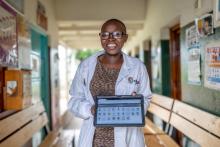
“Currently we can report on the specific services that we are offering and identify the specific services we need.”
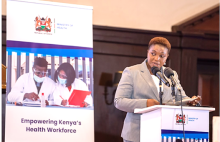
“Often, we have not met expectations on many fronts of health care and it is because we have been relying on either no data, inaccurate data, or outdated data. With digitization, I believe we are going to make the right decisions and informed choices, because we shall have real time data.”
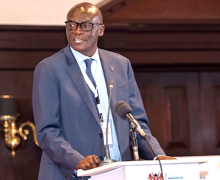
“It is my sincere hope that the findings of the health labor market analysis will provide evidence-based recommendations that will inform the Human Resources for Health policy and further improve the health care services in the country. I encourage you all to utilize the findings for decision-making, planning and programming.”
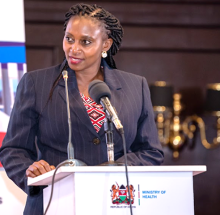
“This dialogue intends to provide actors in the Human Resources for Health landscape an opportunity to honestly engage and highlight the real issues that affect our health workforce in order to realize our aspirations, especially with the roll out of UHC.”
“We were very grateful that WHO supported us to bring together all these actors. We heard from people in the health workforce affected by daily challenges, and who are trying to deal with complex issues. From the narrative of over 100 people emerged an agenda with 17 action points and plans on how to implement them.”
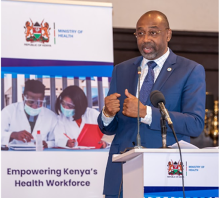
“Kenya is demonstrating its commitment to achieving health for all through decisive action, with health workers serving as the backbone of the health system. The points that emerged from the national dialogue provide significant milestones to ensure that UHC becomes a reality.”
THE LONG READ

“Five years ago, I used to be 1 of 2 nurses working at this facility. I remember when some clients would come, and I used to turn them down because I was too tired. These days, we are a team of 4 so I am able to respond to my patients efficiently. Even when one of us goes on leave, we still have capacity,” said Esther Omagwa, a nurse at Railways Health Centre in Kisumu.
Staff at Railways Health Centre have seen a great improvement in their health workforce. Over five years the facility has expanded from 10 to 30 staff members, reflecting the broader national initiative to enhance healthcare delivery through strategic workforce development. Health workers are fundamental to strong health systems, and to progress towards universal health coverage.
This was due to sustained interventions by the Government of Kenya and its partners to improve the availability of health workers to deliver health services across the country. According to Kenya’s Health Labour Market Analysis 2023, which was conducted with technical and financial support from WHO, Kenya has doubled its health workforce in the last 10 years. This includes nurses, midwives, doctors, clinical officers and other trained professionals. Improved availability of health workers at healthcare facilities across Kenya has significantly enhanced patient care, leading to an increase in individuals seeking treatment and improved quality of care offered at health facilities nationwide.
“In the past we used to have difficulties in managing our clients. For example, if we had an emergency case, we would not be able to leave that emergency to attend to the other patients which really increased their waiting time,” said Victoria Atieno, a Clinician at Railways Health Centre.

However, Kenya, like many countries, still faces challenges in ensuring that its health workforce meets the health needs of the population. Kenya’s Health Labour Market Analysis also found that, although the overall stock of health workers is increasing, their distribution across and within subnational levels (counties) remains inequitable. Despite significant improvements, Kenya has still not yet reached its health workforce targets to achieve universal health coverage. In 2020, Kenya had almost 190 000 health workers, with 66% of them working in the public sector. This was comprised of 58% nurses, 13% clinical officers, and 7% doctors. Health worker density in Kenya at that time was 30.14 doctors, nurses, midwives, and clinical officers per 10 000 population - only 68% of the 44.5 doctors, nurses, and midwives per 10 000 population SDG threshold indicator. Therefore, there is still much work to be done.
The Government of Kenya has been using data, evidence, and multi-stakeholder dialogues to identify and implement strategic interventions to address its health workforce challenges. This supported the strategic investment needed in implementing the Kenya Human Resources for Health (HRH) Strategy 2019-2023, which is the foundation on which WHO supports the Kenyan Ministry of Health.
“To effectively use the investments made in the health sector as part of the UHC journey, there is need for a fit-for-purpose health workforce with appropriate skills mix and adequate number,” said Dr Sultani Matendechero, Acting Deputy Director General of the Ministry of Health, Kenya.

Improving data availability and quality for decision-making
Since 2020, with support from the UHC Partnership, WHO has provided technical and financial support to strengthen the availability and use of data for health workforce strategic planning and health workforce management at national and county levels.
The UHC Partnership operates in over 125 countries, representing over 3 billion people. It is supported and funded by Belgium, Canada, the European Union, France, Germany, Ireland, Luxembourg, Japan, the United Kingdom of Great Britain and Northern Ireland, and WHO.
The Kenya National Human Resources for Health (HRH) strategic plan prioritized a master HRH database to progressively improve the availability, quality, and use of data on the health workforce and to monitor a set of indicators that supports progress toward UHC.
Previously, Railways health Centre collected data manually on paper, making it hard to feed information back to the national level. The Centre now has six health records and information officers who are equipped with electronic devices that enable them to provide timely and accurate data, helping the Ministry of Health to make more informed decisions on health service delivery needs and adequate planning of the required health workforce.
“Currently we can report on the specific services that we are offering and identify the specific services we need,” said Flavia Naudi, Data Manager at Railways Health Centre.

“Often, we have not met expectations on many fronts of health care, and it is because we have been relying on either no data, inaccurate data, or outdated data. With digitization, I believe we are going to make the right decisions and informed choices, because we shall have real time data,” said Madam Susan Nakhumicha, former Cabinet Secretary of Health of the Government of Kenya.

In 2019, WHO introduced the National Health Workforce Accounts (NHWA) to the Ministry of Health as a way of guiding Kenya’s approach to progressively improve the quality, availability and use of data and evidence. WHO supported Kenya to develop the concept and approach, provided training to the national core team, and nominated county focal points to support implementation. In June 2023, the Ministry of Health implemented a third cycle of the NHWA aiming to progressively improve the quality, availability and use of data and evidence.
The implementation of NHWA provided a foundation for conducting a Health Labour Market Analysis during 2021-2023. This is an economic framework to systematically generate evidence on the interaction and mismatches in supplies of health workers, population health needs, demand for health workers, and the feasibility and impact of different policy options. The findings from the health labour market analysis provided policy recommendations for Kenya’s broader health workforce strategy.
Identifying staffing needs nationwide
WHO, through the UHC Partnership, also provided technical and financial resources to the Ministry of Health to set up and train technical working groups to conduct staffing requirements for service delivery at health facilities using the Workload Indicators of Staffing Needs (WISN) method. This will provide health managers in counties with a systematic way to make staffing decisions to effectively manage their valuable human resources.
Identifying staffing needs for health service delivery will be instrumental in the review of Staffing Norms and Standards to guide the distribution of the health workforce across all levels of care in the country.
“It is my sincere hope that the findings of the health labour market analysis will provide evidence-based recommendations that will inform the Human Resources for Health policy and further improve the health care services in the country. I encourage you all to utilize the findings for decision-making, planning and programming,” said Dr Patrick Amoth, Director General, Ministry of Health, Kenya.

Engagement through multi-stakeholder national dialogue
WHO, through the UHC Partnership and the United Kingdom Department of Health and Social Care (DHSC) – Global Health Workforce Programme, supported the Kenya Health Human Resources Advisory Council (KHHRAC) to hold a National Dialogue on Strengthening Health Workforce Development and Management. This dialogue convened stakeholders from national and county governments and public and private sectors that work directly with the health workforce or in related sectors such as education.
The goal was to create a shared understanding of the current health workforce situation and challenges in Kenya, identify innovations and best practices in strengthening human resource development and management in the country, and develop a roadmap to guide action to strengthen the HRH function and its contribution towards achieving UHC.
“This dialogue intends to provide actors in the Human Resources for Health landscape an opportunity to honestly engage and highlight the real issues that affect our health workforce in order to realize our aspirations, especially with the roll out of UHC,” said Principal Secretary for State Department of Public Health and Quality Standards, Madam Mary Muthoni.

During the two days' dialogue, over 100 participants including policymakers, health workers’ labour unions, professional associations, training institutions, and health workers themselves engaged in discussions to identify challenges and solutions including what has worked well in the past.
“We were very grateful that WHO supported us to bring together all these actors. We heard from people in the health workforce affected by daily challenges, and who are trying to deal with complex issues. From the narrative of over 100 people emerged an agenda with 17 action points and plans on how to implement them,” said Dr John Kihama, Acting CEO for the Kenya Health Human Resource Advisory Council.
The action points identified innovative solutions and best practices for strengthening health workforce development and management in the areas of employment, remuneration, distribution, retention, and performance management. Participants created a roadmap with clear timelines for coordinated efforts to enhance human resources for health. So far, progress has been made in starting to reform the system that protects health workers through medical insurance, and in improving the way that the internship of health worker trainees operates.
Strengthening the health workforce is a key pillar in the Government’s five-year medium-term plan drawn from the Vision 2030 Development agenda, that includes ambitions to achieve UHC. The dialogue culminated with the signing of the Kericho National Declaration on Health Workforce with resolutions and actions to be implemented by the Ministry of Health and stakeholders over two years. If translated effectively into investments and policies, the Kericho Declaration can significantly advance Kenya's efforts towards achieving Universal Health Coverage.
“Kenya is demonstrating its commitment to achieving health for all through decisive action, with health workers serving as the backbone of the health system. The points that emerged from the national dialogue provide significant milestones to ensure that UHC becomes a reality,” said Dr Diallo Abdourahmane, WHO Representative to Kenya.

Health Security
Kenya has demonstrated a steadfast commitment to bolstering its health workforce, fortifying health security, and advancing towards achieving UHC. This dedication is evidenced by the meticulous completion and updating of all tools under the International Health Regulations (IHR, 2005) Monitoring and Evaluation Framework (MEF).
Since 2017, the government has prioritized strengthening the health system by finalizing essential tools such as the State Party Self-Assessment Annual Reporting Tool (SPAR). SPAR encompasses 24 indicators crucial for detecting, assessing, notifying, reporting, and responding to public health risks, including those of domestic and international concern such as COVID-19.
Additionally, in 2017 Kenya voluntarily underwent a Joint External Evaluation (JEE) to assess its capacities in preventing, detecting, and responding to health emergencies. Subsequently, the country utilized the outcomes of the JEE to craft a comprehensive National Action Plan for Health Security (NAPHS) in the following year. To adapt and improve its response capabilities, a new iteration of the NAPHS was released in 2022, incorporating insights gleaned from the COVID-19 response and Simulation Exercises (SimEx) conducted in 2018, 2019, and 2020.
Collaborating closely with WHO, Kenya conducted these exercises to ensure the efficacy of emergency response systems, thereby ensuring timely and effective responses to health emergencies. Through such proactive measures, Kenya underscores its commitment to enhancing health security, advancing towards UHC, and investing in its health workforce.
You can find more information by visiting the Strategic Partnership for Health Security and Emergency Preparedness (SPH) Portal at https://extranet.who.int/sph/
